- Anthony D'Amico
- Albums and Singles
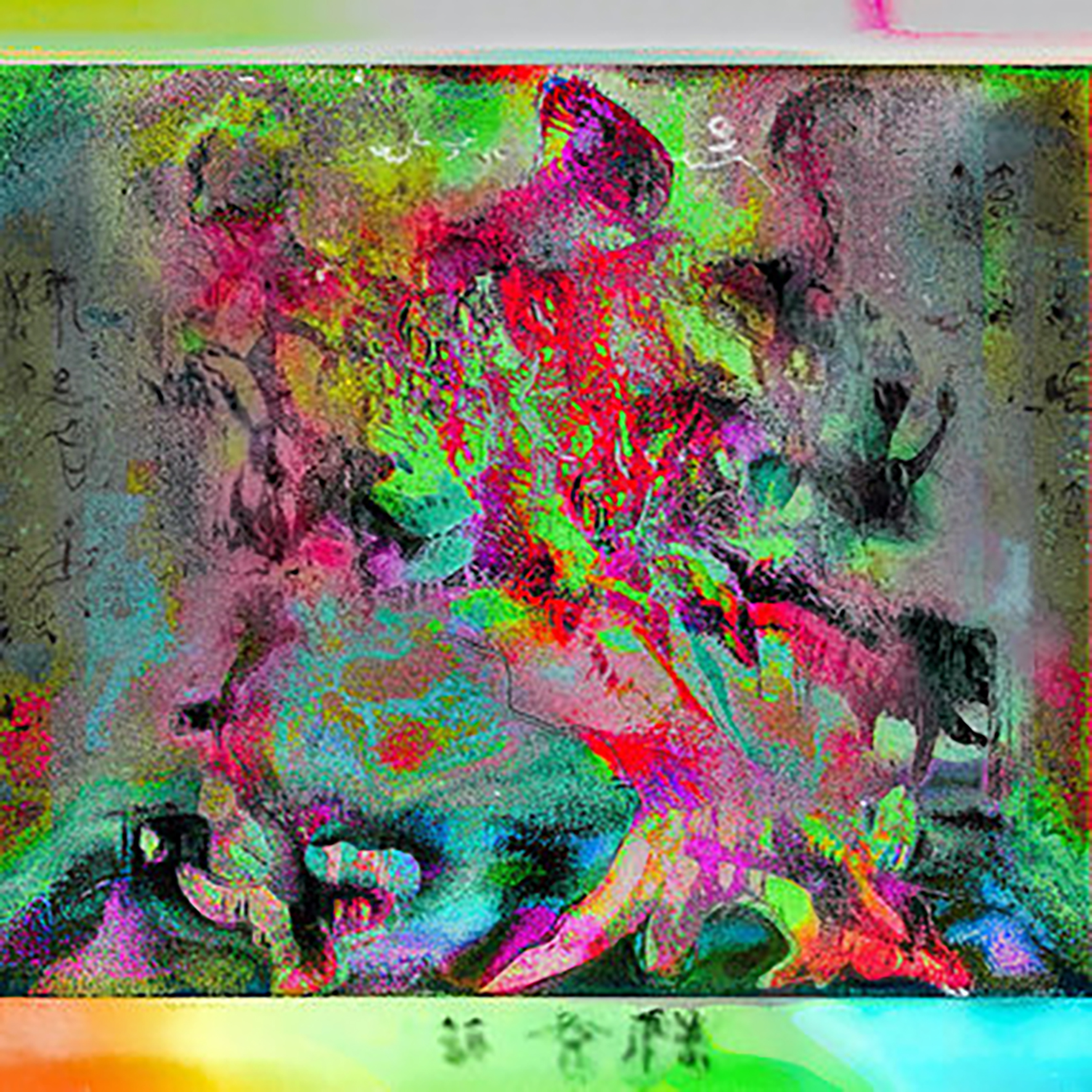 Unraveling the discography and line-up mutations of this Ho Chi Minh City-based collective turned out to be quite an unexpected challenge, as they have been releasing full-lengths and EPs since at least 2014, yet this latest album is being billed as the project's debut. I thought this might be the first release with "collective" appended to the group's name, but that is not the case either. That said, the project now appears to be a trio consisting of original members Phạm Thế Vũ and Jung Buffalo, as well as relatively recent addition Zach Schreier (who ostensibly composed much of the album). In any case, this latest release bears little stylistic resemblance to several of RCD's previous releases. Much of that is likely due to the involvement of Berlin-based producer Ziúr, who alternately punched up the songs to Subtext's exactingly high standards, "reduced them to a cinder," or "beamed them into the fifth dimension." Regardless of how this album took shape, it is quite a dazzling and deliriously kinetic achievement, resembling a freewheeling Carl Stone-esque plunderphonic tour de force of shapeshifting Vietnamese cultural fragments.
Unraveling the discography and line-up mutations of this Ho Chi Minh City-based collective turned out to be quite an unexpected challenge, as they have been releasing full-lengths and EPs since at least 2014, yet this latest album is being billed as the project's debut. I thought this might be the first release with "collective" appended to the group's name, but that is not the case either. That said, the project now appears to be a trio consisting of original members Phạm Thế Vũ and Jung Buffalo, as well as relatively recent addition Zach Schreier (who ostensibly composed much of the album). In any case, this latest release bears little stylistic resemblance to several of RCD's previous releases. Much of that is likely due to the involvement of Berlin-based producer Ziúr, who alternately punched up the songs to Subtext's exactingly high standards, "reduced them to a cinder," or "beamed them into the fifth dimension." Regardless of how this album took shape, it is quite a dazzling and deliriously kinetic achievement, resembling a freewheeling Carl Stone-esque plunderphonic tour de force of shapeshifting Vietnamese cultural fragments.
The title of this album roughly translates "Sleeping Through the Apocalypse," which is a colorful yet remarkably apt description of the trio's dizzying and disorienting vision. The "sleep" part is a bit misleading though, as this album more closely evokes the troubled, jumbled, and cacophonous dreams of an overstimulated and media-saturated mind in an increasingly unraveling world. In more concrete terms, that means the album is a hyper-caffeinated maelstrom of surreal collisions and transformations. I tend to loathe most releases that could be described as "aggressively genre-defying" or "like _____ in a blender," but there is a coherent overarching "sound collage" vision here that weaves all of those jarring shifts into a churning and warping near-masterpiece of mindfuckery. Given that, trying to accurately describe even a single song is hopeless, as my notes are filled with phrases like "the most incredible Terry Riley song ever just became Vietnamese cloud rap karaoke." The closing "Đme giựt mồng" that I just described is one of the album's stone-cold gems, but there are quite a few other highlights to be found as well. Some other favorites are "Aztec Glue" ("dreamy pulsing synth reverie gets violently interrupted by an in-the-red Ben Frost remix") and pair of pieces that feel like they could be the work of a supernaturally possessed radio ("Eri Eri…" and "Infinite"). The former sounds like a deranged pile of overlapping stations or Carl Stone at his most kaleidoscopic and unstable, but the collective further spice things up with psychotically shifting speeds and an unexpectedly rapturous crescendo. "Infinite," on the other hand, sounds like Vietnamese dance pop chopped and stretched into a stammering nightmare. The stammering is especially impressive, as the piece sometimes feels like a cacophony of the world's airwaves is organically shaping into pulsing rhythms. At other times, the album calls to mind free jazz, whale songs, or Popul Vuh and absolutely all of it is vividly fried, as this album is a gleefully shapeshifting feast of wide-ranging and inspired ideas from start to finish. In fact, it feels favorably like channel-surfing through like a dozen different cool albums at once. This is instantly one of my favorite albums in the Subtext canon.
Samples can be found here.
Read More
- Anthony D'Amico
- Albums and Singles
 The underground/experimental music world is full of promising-sounding collaborations that yield underwhelming or half-baked results, but Lucy & Aaron is a wonderfully refreshing exception to that recurring phenomenon. Part of that success is likely due to the pair's long history together, as they have been fans of each other's work (and close friends) since meeting at a festival in Madeira back in 2010. Moreover, Dalt and Dilloway have actually inspired and impacted each other's work over the years, which probably went a long way in setting the stage for such a natural-sounding and symbiotic blurring together of visions. As Dalt puts it, "we crossed our signals, sometimes his affecting mine, or the other way around, we just wanted to make a fun, weird and inevitably emotive record that somehow captured so many things we love about music." Naturally, Dilloway's endearingly disorienting and creepy tape loops tend to be the foundation for much of the album, as Dalt's own backdrops tend to be quite stark and minimal. The mood of the album is quite a bit different from typical Dilloway fare, however, as Dalt's melodic influence transforms his obsessively repeating fragments of simmering psychotropic weirdness into a broken and playfully warped "pop" album like no other.
The underground/experimental music world is full of promising-sounding collaborations that yield underwhelming or half-baked results, but Lucy & Aaron is a wonderfully refreshing exception to that recurring phenomenon. Part of that success is likely due to the pair's long history together, as they have been fans of each other's work (and close friends) since meeting at a festival in Madeira back in 2010. Moreover, Dalt and Dilloway have actually inspired and impacted each other's work over the years, which probably went a long way in setting the stage for such a natural-sounding and symbiotic blurring together of visions. As Dalt puts it, "we crossed our signals, sometimes his affecting mine, or the other way around, we just wanted to make a fun, weird and inevitably emotive record that somehow captured so many things we love about music." Naturally, Dilloway's endearingly disorienting and creepy tape loops tend to be the foundation for much of the album, as Dalt's own backdrops tend to be quite stark and minimal. The mood of the album is quite a bit different from typical Dilloway fare, however, as Dalt's melodic influence transforms his obsessively repeating fragments of simmering psychotropic weirdness into a broken and playfully warped "pop" album like no other.
The best summation I can come up with for this album's aesthetic is that it sounds like Lucrecia Dalt's already frayed and alien-sounding pop was fed through a nightmare machine set somewhere between "Kafkaesque" and "arty Giallo film." There is nothing that feels outright malevolent or violent, but there is also nothing familiar and nearly all of it feels unsettling and disturbingly tactile. The songs are roughly structured like pop songs, as there are vocal melodies, grooves, and sometimes even hook-like approximations of a chorus, yet all of it feels unrecognizably grimy, broken, and obsessive in a host of intriguing ways. The entire album is a creepily surreal delight, as it is hard to imagine a single piece that could not be someone's favorite, but my current personal favorites are "The Blob," "Niles Baroque," and several of the weirdly beautiful psych-inspired pieces that come near the end of the album. "The Blob" is probably the album’s most unexpected surprise, as it sounds like Pat Benatar made a dreampop album for 4AD but a deranged dub producer got his hands on it and replaced the entire rhythm section with one of those little wind-up monkeys with a drum. "Niles Baroque" is similarly melodic (there are even dual vocal harmonies), but the groove is centered on a lurching bass throb that feels viscerally gelatinous. Those two pieces, along with treble-ravaged and industrial-damaged single "Demands Of Ordinary Devotion," are the ones where Dalt and Dilloway's aesthetics most seamlessly combine into curdled pop pleasures, but I am also a huge fan of the outliers that feel like something I would not expect from either artist. The best of those is probably "Tense Cuts," which sounds like a collaboration between a factory, a locked groove of church organ motif, an ASMR recording, and a broken speaker, but there are some even more unlikely moments that approximate a grim Russian ballroom dance ("Voyria") or fleetingly resemble '80s Legendary Pink Dots ("The Tunnel"). I could easily write a paragraph about every single piece here though, as each slithering tendril of this unholy pop union is memorable, unique, and unexpected in some way. Lucy & Aaron is absolutely going to be all over "best of 2021" lists this December (my own included).
Samples can be found here.
Read More
- Administrator
- Albums and Singles

Sound In Silence is proud to welcome back Western Edges, presenting his new album Dependency.
Western Edges is the ambient/electronic solo project of Richard Adams, founder member, alongside his brother Chris, of the legendary Leeds band Hood. Since Hood went on hiatus in 2005, Richard Adams has recorded his music under the moniker of The Declining Winter, either solo or with help of friends such as Martin Cummings (Northerner), Paul Elam (Fieldhead), Mick Harrison (Prolapse, National Screen Service), James Yates (Seamajestea), Barrie Cummings, Joanne Ellis and many others, having released several sublime albums, EPs and singles on labels such as Home Assembly Music, Rusted Rail, Monopsone, Mobeer and Rural Colours, amongst others. He is also member of several other projects such as Memory Drawings, Great Panoptique Winter and Northern Exchange, along with friends such as Joel Hanson (Judgement Of Paris), Sarah Kemp (Brave Timbers, Last Harbour), Gareth S Brown (Hood), Chris Cole (Manyfingers, Movietone), Jason Sweeney (Panoptique Electrical) and others.
Dependency, Western Edges’ second full-length album, consists of nine new tracks, ranging from soothing ambient to dreamy lo-fi electronica and minimal techno. Adams continues exploring the world of ambient and electronic music, blending ethereal pad washes, eerie synth melodies, shimmering electronics, slow moving drones, dubby bass lines and crunchy rhythm patterns, nicely into a fluid mix creating another wonderful album.
Dependency is a re-imagining of the sound of ‘90s garage, techno and ambient music coming out a car radio on an eclectic pirate radio station mixing in with the buffeting air around the hills and valleys of Yorkshire and Lancashire, UK... a journey through remote moorland after a ‘90s rave.
Expertly mastered by George Mastrokostas (aka Absent Without Leave), Dependency is an impressive album, full of blissful soundscapes, gently repetitive motifs, delicate textures, rhythmic electronic impulses, hazy nostalgia and deep heartfelt emotions, which appeals to all fans of DeepChord, Aphex Twin, bvdub, Space Afrika, Boards Of Canada and late-period Hood.
More information can be found here.
Read More
- Administrator
- Albums and Singles
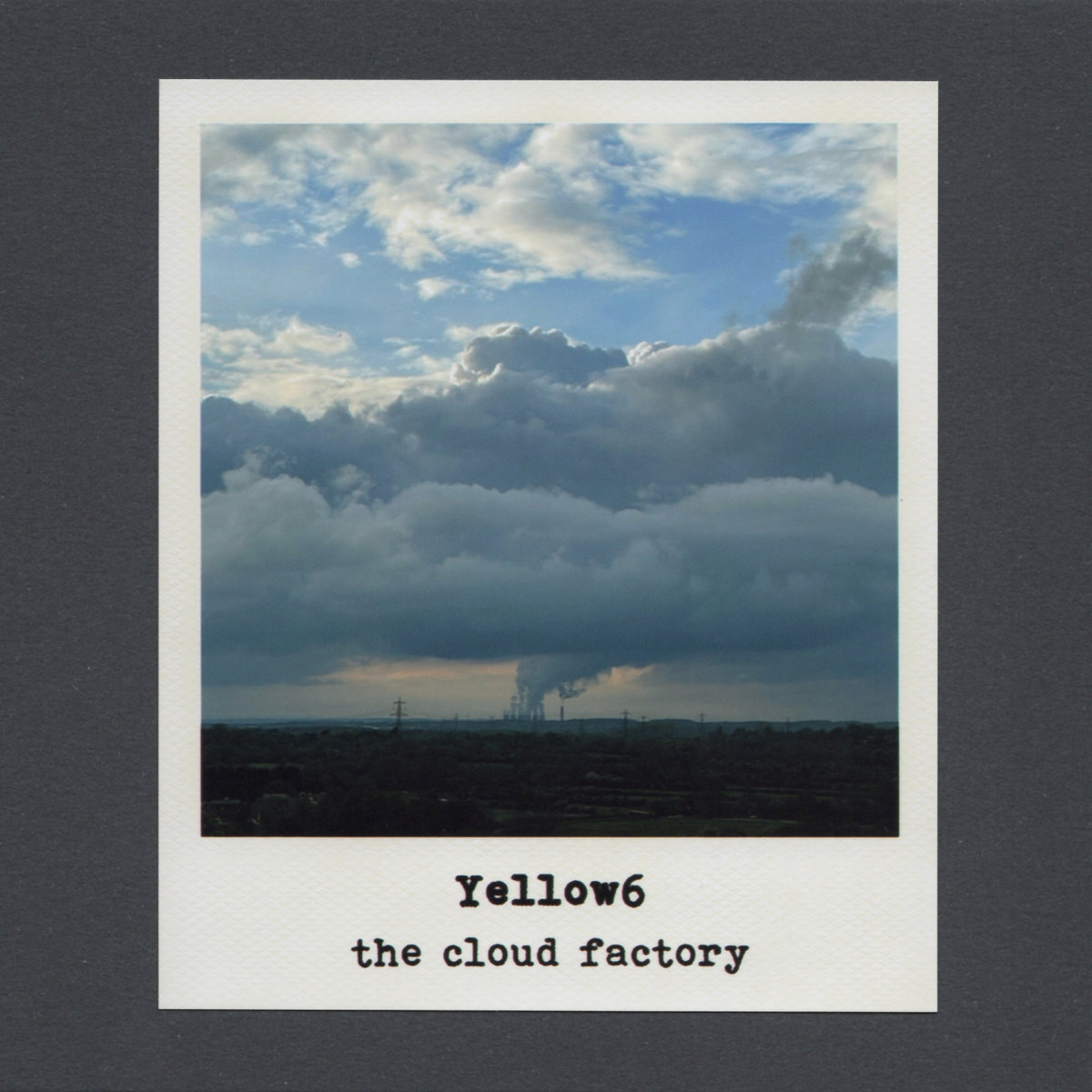
Sound In Silence is happy to welcome back Yellow6, presenting his new album The Cloud Factory.
Yellow6 is the solo project of Jon Attwood, based in Leicestershire, UK. During the last two decades he has established himself as one of the foremost purveyors in the ambient/post-rock scene, having released his music on labels such as Enraptured, Make Mine Music, Resonant, Cathedral Transmissions, and his own Editions6, amongst many others. Since 1998 he has played many shows in Europe and North America, and has collaborated with many other artists such as Portal, Thisquietarmy, Absent Without Leave, Caught In The Wake Forever, David Newlyn, Charles Atlas, Stafrænn Hákon and many others too.
The Cloud Factory is made up of ten new tracks with a total duration of about 67 minutes. All tracks were recorded at home between March and May 2021, and were expertly mastered by George Mastrokostas (aka Absent Without Leave).
The past year has been a busy one for Yellow6, with a number of album releases, exploring variations in composition and instrumentation, along with two collaborative projects. After completing For The First And Last, and material for a forthcoming album for Enraptured, both being more focused on beats and distorted guitars, Attwood decided to shift the focus, in part inspired by recent work by Warren Ellis and Nick Cave’s soundtrack work, and the varied minimalist approach of Philip Glass and Burial among others. Rather than the previously used approach of anchoring each tune on arpeggiated and delayed guitars to set the tone, these tracks have a greater focus on more abstract and heavily effected loops, topped with repeating intertwining clear and clean guitars, which was helped by a change to a more minimal effects board.
More information can be found here.
Read More
- Anthony D'Amico
- Albums and Singles
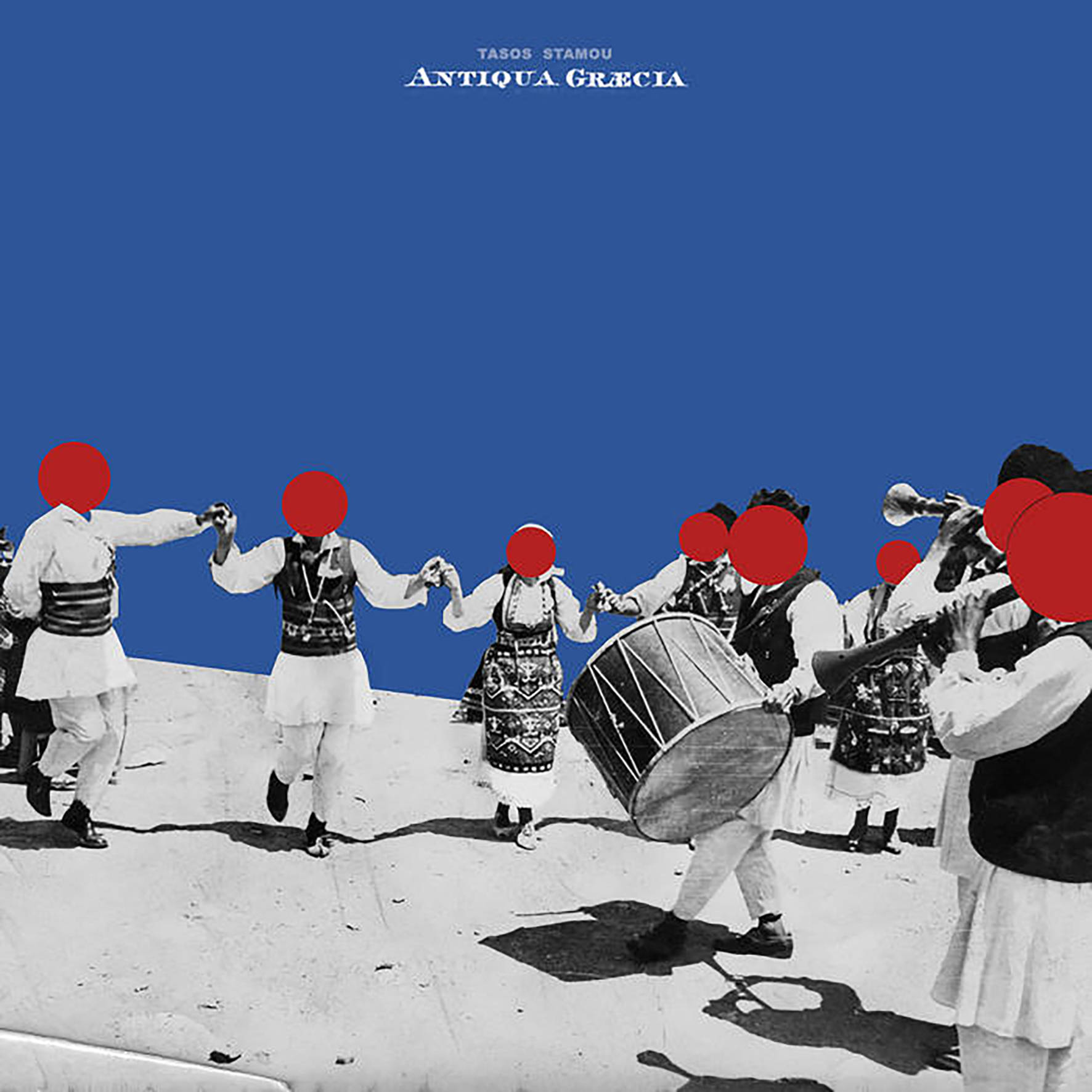 This London-based electroacoustic composer/instrument builder/DIY electronics enthusiast has been engaged in projects and activities for more than a decade now, but this latest album is the first time his singular vision crossed my path. Antiqua Graecia is the final release of a Greek-themed trilogy that began with 2018's Musique con Crète, though there is also a fourth related work that surfaced on Chocolate Monk last year (Greek Drama). The series is the fruit of an extended creative research project that initially began with a residency, but blossomed into repeat summer visits to Crete to hunt for traditional music albums, perform with local musicians, and make field recordings. While I have not fully absorbed the entire series yet, Antique Graecia feels like a significant creative leap forward from previous installments, as Tamou's earlier Greek forays resemble a Sublime Frequencies album dissolved into a fever dream: there was a clear reverence for the source material, yet Tamou's sound collages imbued traditional music with a murky, spectral character. With Antiqua Graecia, Tamou decided to go for broke, gleefully chopping and layering folk songs in a wonderfully psychotropic fantasia. I find all of the strains of Tamou's Greek series to be compelling, but this album is the one that most beautifully transcends tradition to feel like something wonderful and new.
This London-based electroacoustic composer/instrument builder/DIY electronics enthusiast has been engaged in projects and activities for more than a decade now, but this latest album is the first time his singular vision crossed my path. Antiqua Graecia is the final release of a Greek-themed trilogy that began with 2018's Musique con Crète, though there is also a fourth related work that surfaced on Chocolate Monk last year (Greek Drama). The series is the fruit of an extended creative research project that initially began with a residency, but blossomed into repeat summer visits to Crete to hunt for traditional music albums, perform with local musicians, and make field recordings. While I have not fully absorbed the entire series yet, Antique Graecia feels like a significant creative leap forward from previous installments, as Tamou's earlier Greek forays resemble a Sublime Frequencies album dissolved into a fever dream: there was a clear reverence for the source material, yet Tamou's sound collages imbued traditional music with a murky, spectral character. With Antiqua Graecia, Tamou decided to go for broke, gleefully chopping and layering folk songs in a wonderfully psychotropic fantasia. I find all of the strains of Tamou's Greek series to be compelling, but this album is the one that most beautifully transcends tradition to feel like something wonderful and new.
This is an album of top-tier psychedelic mindfuckery from start to finish, which makes it very hard to describe with any concise generalizations, but a rough summary like "a supernatural fun house at the center of a Greek street fair" is probably a solid starting point. There is a distinct arc, however, as the first few drone-based pieces steadily deepen my immersion in Tamou's otherworldly fantasia to prime me for the wilder plunges to come. For example, "Madoura" sounds like a nightmarishly insectoid cacophony of buzzing bagpipe-like drones, while the following "Poor Mum" sounds like mid-90s Dead Can Dance made a lysergic soundscape from Nonesuch Explorer classics. We then pass through something akin to a flickering and phantasmagoric Scottish parade in a haunted jungle ("Oil Wrestling"), a phantom rembetiko song with an electronic doppelganger ("Taki’s Sorrow"), and a Lisa Gerrard-sung DCD classic consumed by a sickly, dissonant delirium of smeared chimes ("A Woman's Moan"). All are a delight, but the album fully catches fire with the sixth piece, "Just Pagan." It begins as a psychotropic throb of heavy electronic drones and surreal, jumbled, and haunting layers of melody and field recordings, but gradually transforms into a heartsick folk dance. The following "Epitaph" is yet another highlight, as the gong of a church bell leaves a ringing, bleary haze of high frequencies that morphs into a squirming, menacing electronic buzz mingled with a chanting street procession. The final piece brings that trend of escalating otherworldliness to its curious crescendo, as it feels like a cathedral is invaded by a churning, honking, and squawking cacophony (and a cow) before everything dissolves into a disarmingly sweet and calm rustic oasis. Tamou truly outdid himself with this tour de force, as all of these eight songs seamlessly blur sacred and traditional sounds with vivid, multilayered psychedelia in impressively singular fashion.
Samples can be found here.
Read More
- Anthony D'Amico
- Albums and Singles
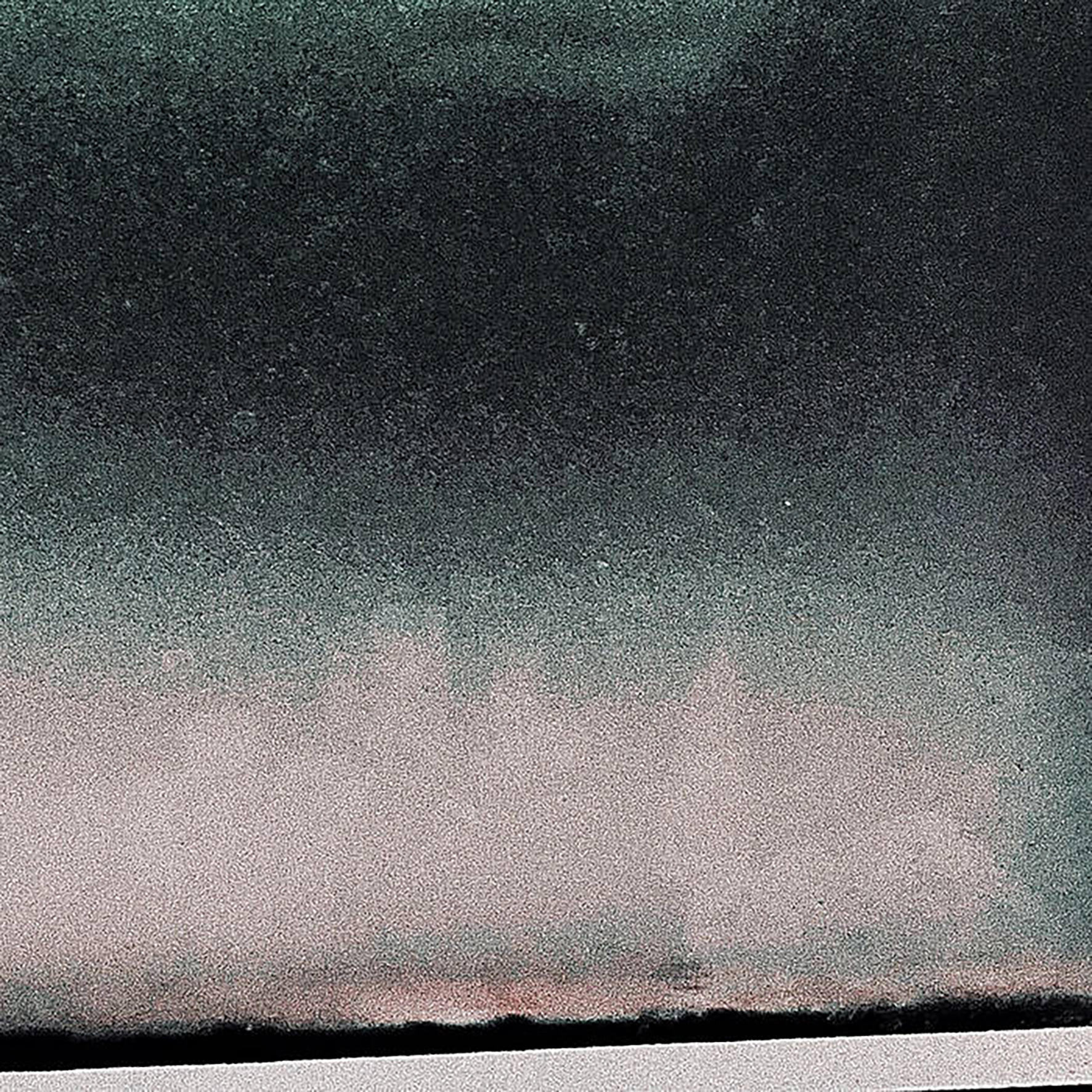 This is the first installment of "an ongoing album series with an undecided end point examining futility and beauty." Those are hardly new themes for Kyle Bobby Dunn, so I am not sure why they needed their own series, but any new KBD opus is fine by me. Dunn is a unique figure in the ambient drone milieu for a number of reasons, but the most significant for me is his unique gift for crafting soundscapes with a very real emotional intensity at their core. When he directly hits the mark with a composition like "Triple Axel on Cremazie" or "The Searchers," he achieves something poignant and transcendent that is damn hard to come by. I suppose one caveat with Dunn's work is that such moments are usually hidden within sprawling double-, triple-, or quadruple-LP epics, but this latest album is a more focused and concise release. More importantly, the bulk of the album is devoted to the absolutely sublime 48-minute "Fantasia on a Theme of Affection." The other two pieces are memorable as well, arguably making this the closest that Dunn has come to releasing an "all killer, no filler" masterpiece.
This is the first installment of "an ongoing album series with an undecided end point examining futility and beauty." Those are hardly new themes for Kyle Bobby Dunn, so I am not sure why they needed their own series, but any new KBD opus is fine by me. Dunn is a unique figure in the ambient drone milieu for a number of reasons, but the most significant for me is his unique gift for crafting soundscapes with a very real emotional intensity at their core. When he directly hits the mark with a composition like "Triple Axel on Cremazie" or "The Searchers," he achieves something poignant and transcendent that is damn hard to come by. I suppose one caveat with Dunn's work is that such moments are usually hidden within sprawling double-, triple-, or quadruple-LP epics, but this latest album is a more focused and concise release. More importantly, the bulk of the album is devoted to the absolutely sublime 48-minute "Fantasia on a Theme of Affection." The other two pieces are memorable as well, arguably making this the closest that Dunn has come to releasing an "all killer, no filler" masterpiece.
"Thresholding" kicks off the album in striking and surprising fashion, as Dunn unleashes an industrial-sounding drone that oscillates slowly and menacingly. Gradually that foundation is subtly fleshed out with additional depth and harmonic color, but the most compelling part is the murky undercurrent of dissonance that roils within. While it never intensifies enough to consume its surroundings (it is the album's shortest piece), Dunn does manage to resolve it in startling fashion with a nightmarishly plunging pitch-shift. I did not expect such a cold and alienating piece from Dunn, but it is masterfully crafted, and I loved the simmering uneasiness beneath the drones. That said, it is immediately eclipsed by the dream-like reverie of "Fantasia on a Theme of Affection." On its surface, it is not a radical departure for Dunn, as a ghostly see-sawing guitar motif languorously unfolds over a backdrop of shimmering haze. However, it stealthily amasses deepening harmonies and an aching poignance as it lingers in a state of billowing suspended animation. It is the sort of piece that I could enjoy in an endless loop, as Dunn's attention to textural detail is truly something to behold. Nearly every sound is spectral, hissing, smeared, quivering, or enigmatic in a beautifully hypnagogic, soft-focus way. The album closes with the divergent "Pavane for the Internal Monologue," which is centered on a repeating, bittersweet piano chord and its long, lingering decay. Eventually, a hesitant melody emerges, and the piece moves closer to the liquid shimmer of Harold Budd, yet the real show lies in the space between the notes, as dissolving tones form murky harmonies, and quiet sounds of wood and shuffling paper start to evoke an enigmatic sense of place. While the bookends do not quite hit the same heights as the album's centerpiece, all three pieces are strong enough to make this one of Dunn's finest albums to date.
Samples can be found here.
Read More
- Anthony D'Amico
- Albums and Singles
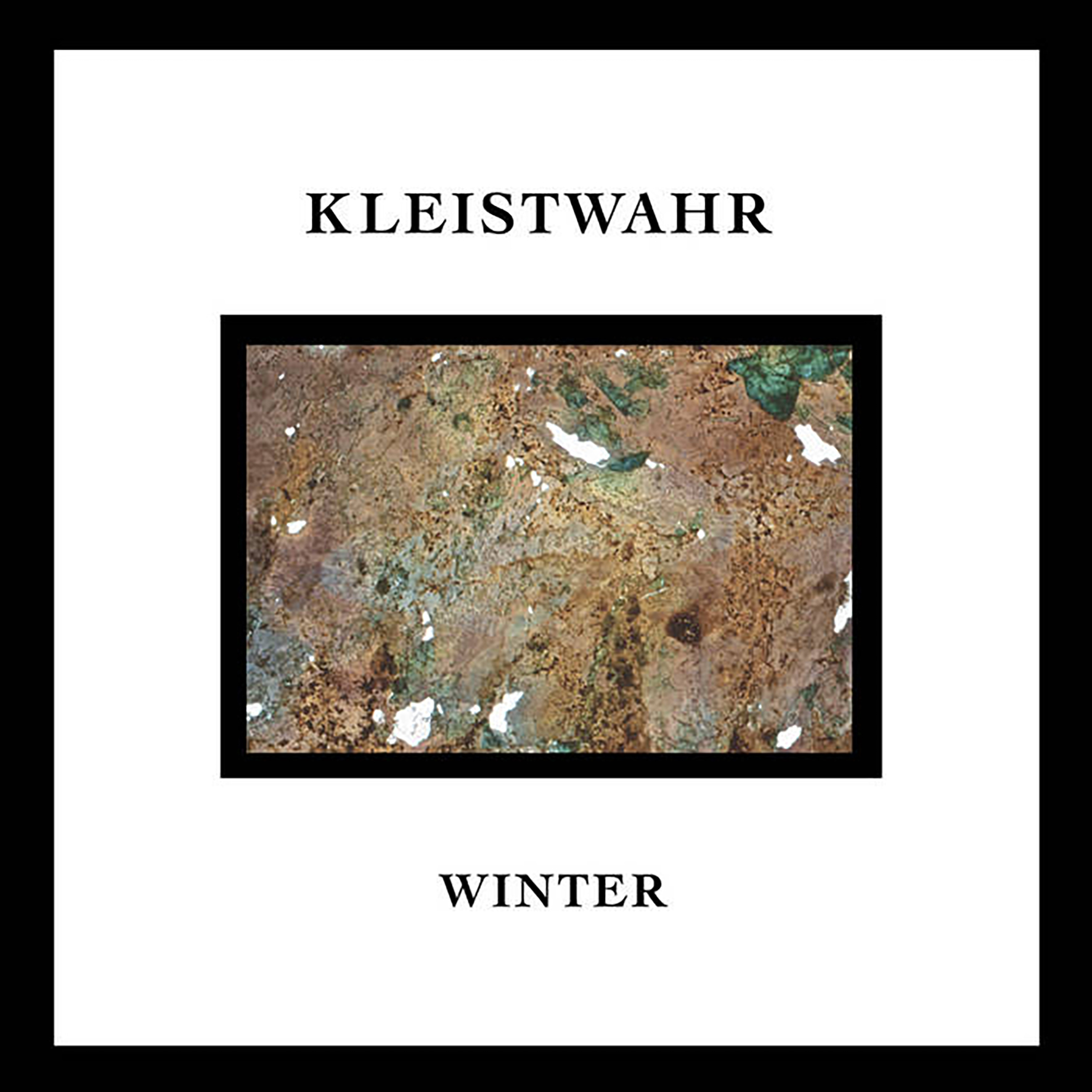 Back in 2019, Helen Scarsdale celebrated its 50th release with a ten-cassette wooden box, On Corrosion, that immediately sold out. While I did manage to pounce on that landmark release in time to get one, I have not spent nearly enough time with it, as absorbing ten full-length albums is quite a herculean time commitment. Consequently, I was delighted to see that the label had embarked upon a campaign to reissue some (or all) of its contents and that they were starting with this bombshell from Gary Mundy's long-running Kleistwahr guise. Being a casual fan of Ramleh and the Broken Flag milieu, I thought I had a solid idea of what to expect from this project (noise, possibly involving guitars), but the striking and unique beauty of this album completely blindsided me. It is fitting that Winter debuted on a release entitled On Corrosion, as it has the feeling of an achingly gorgeous drone album that has been corroded and ravaged into something texturally complex and viscerally soulful.
Back in 2019, Helen Scarsdale celebrated its 50th release with a ten-cassette wooden box, On Corrosion, that immediately sold out. While I did manage to pounce on that landmark release in time to get one, I have not spent nearly enough time with it, as absorbing ten full-length albums is quite a herculean time commitment. Consequently, I was delighted to see that the label had embarked upon a campaign to reissue some (or all) of its contents and that they were starting with this bombshell from Gary Mundy's long-running Kleistwahr guise. Being a casual fan of Ramleh and the Broken Flag milieu, I thought I had a solid idea of what to expect from this project (noise, possibly involving guitars), but the striking and unique beauty of this album completely blindsided me. It is fitting that Winter debuted on a release entitled On Corrosion, as it has the feeling of an achingly gorgeous drone album that has been corroded and ravaged into something texturally complex and viscerally soulful.
Due to its original cassette format, Winter is roughly presented as two twenty-minute sides, but each side features two pieces that segue into each other. "We Sense It Through the Even Snow" kicks off the album with the first of its two god-tier highlights, as buzzing, shifting, and smearing organ drones unpredictably form knots of dissonance while harpsichord-like melodies make me feel like I am imprisoned in a darkly enchanted music box. It becomes incredibly gorgeous at some points, but its mesmerizing dream-like trajectory nearly becomes consumed by an engulfing roar of roiling noise (imagine heaven suffering through a brief plague of psychedelic locusts). That piece segues into the more infernal mindfuck "Rust Eats the Future," which sounds like Purple Rain-era Prince's evil twin unleashing ugly, gnarled shredding over a sinister bed of deep, dissonant bell-like tones. Things only continue to get weirder, but the album returns to more beautiful and melodic terrain as the second side opens with another masterpiece, "The Solstice Will Not Save Us." It is built upon a looping semi-melodic howl, but that hook is surrounded by an absolutely feral-sounding maelstrom of noisy guitars and chords that seem to catch fire and burn away. It feels like a hallucinatory fireworks display over a dying world and easily rivals anything I have heard from other celebrated purveyors of fucked-up guitars. Amusingly, the piece I love the most is immediately followed by one called "Everything We Loved Is Gone." However, that closer is quite strong in its own right, as Mundy makes the air come alive with buzzing high frequencies while evoking a lonely, clanking train slowly chugging through a shimmering and spectral dreamscape. All four pieces are excellent, but at least two of them reach a level of sublime brilliance that absolutely floored me. I had no idea that Mundy's art had evolved to this level.
Samples can be found here.
Read More
- Anthony D'Amico
- Albums and Singles
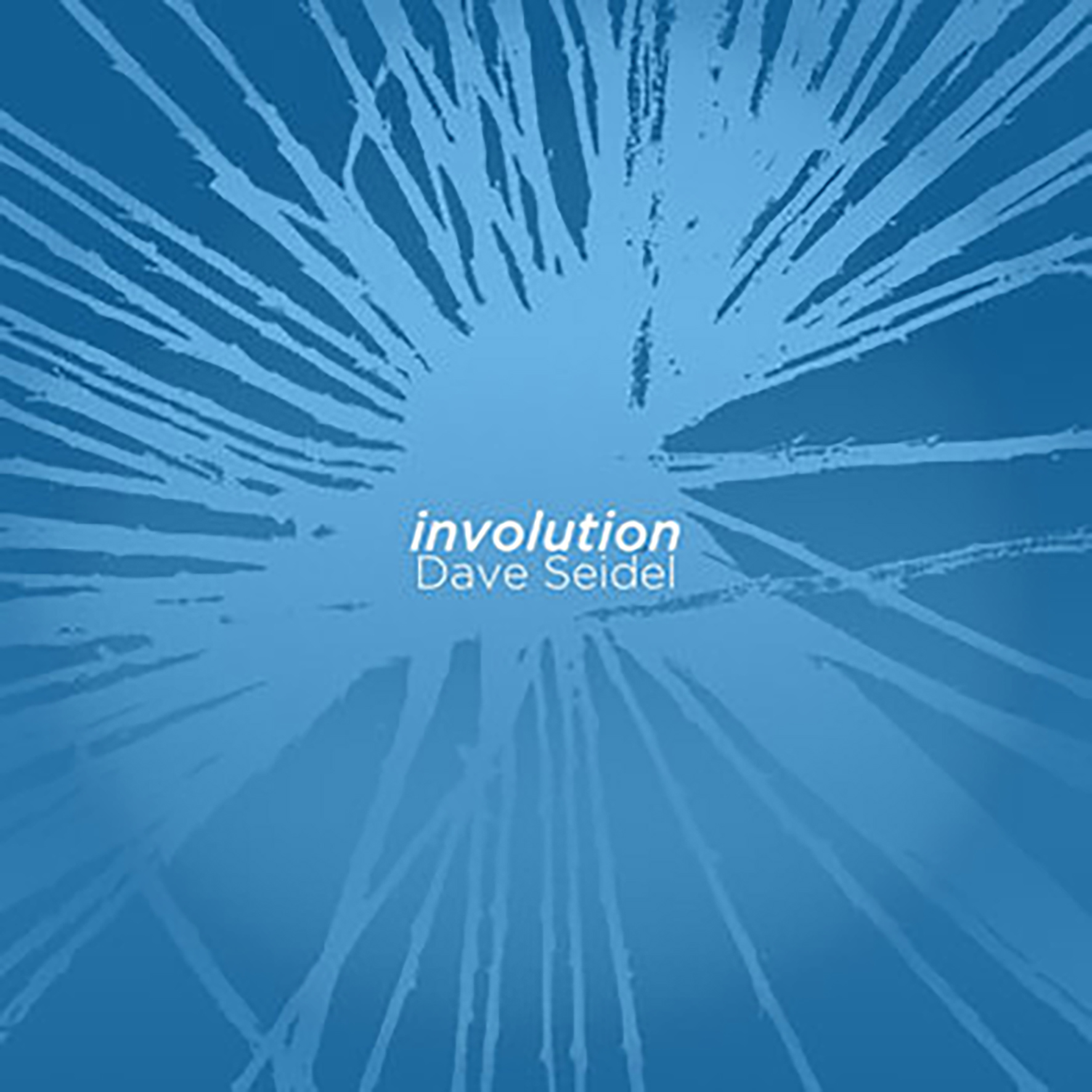 This challenging and overwhelming double album is my first exposure to this NH-based composer, and it was quite a synapse-frying introduction to his uncompromising vision. While Seidel has only been releasing albums as a composer for the last decade or so, he was an active part of NYC's flourishing Downtown music scene in the '80s, and his work feels like it is spiritually descended from that era. Or perhaps from even before that, as he cites Alvin Lucier and La Monte Young as key influences. Unlike most artists inspired by Young, however, Seidel did not stop at dabbling in Just Intonation. Instead, he took "Young's ideal of previously unheard sounds, those that may engender new sensations and emotions in the listener" and ran with it, delving even deeper into unusual tunings until he could bring to life the sonorities that he was chasing. In practical terms, that means that the two compositions here ("Involution" and "Hexany Permutations") are longform drone works teaming with strange and buzzing harmonic collisions, which makes Phill Niblock's XI Records exactly the right home for this epic. While I suspect many people will find Seidel's single-minded and no-frills approach to conjuring unfamiliar sounds intimidatingly difficult, this album will definitely make a big impression on anyone fascinated by the physics and physicality of sound.
This challenging and overwhelming double album is my first exposure to this NH-based composer, and it was quite a synapse-frying introduction to his uncompromising vision. While Seidel has only been releasing albums as a composer for the last decade or so, he was an active part of NYC's flourishing Downtown music scene in the '80s, and his work feels like it is spiritually descended from that era. Or perhaps from even before that, as he cites Alvin Lucier and La Monte Young as key influences. Unlike most artists inspired by Young, however, Seidel did not stop at dabbling in Just Intonation. Instead, he took "Young's ideal of previously unheard sounds, those that may engender new sensations and emotions in the listener" and ran with it, delving even deeper into unusual tunings until he could bring to life the sonorities that he was chasing. In practical terms, that means that the two compositions here ("Involution" and "Hexany Permutations") are longform drone works teaming with strange and buzzing harmonic collisions, which makes Phill Niblock's XI Records exactly the right home for this epic. While I suspect many people will find Seidel's single-minded and no-frills approach to conjuring unfamiliar sounds intimidatingly difficult, this album will definitely make a big impression on anyone fascinated by the physics and physicality of sound.
Dave Seidel is not the first artist to be inspired by the work of Alvin Lucier, but the album that struck him was not one of the usual classics. Instead, Seidel found himself fascinated by a more recent composition, "The Orpheus Variations," which was "based on a particular sonority from the first movement of Igor Stravinsky's ballet score, Orpheus; a sonority that has haunted Lucier for decades." I find "sonority" to be an elusive quality to define, but Lucier's notes on The Orpheus Variations album provide some clarity for what Seidel is attempting, as Lucier views sonority as a sort of phantom energy field that sometimes forms from the unpredictable interactions of waveforms. On Involution, Seidel exactingly employs a modular synthesizer and CSound to conjure one ghostly, buzzing energy field after another like a sorcerer. He succeeds most beautifully with the three-part "Involution," which resembles an endlessly shifting feedback sculpture in which alien dissonances take shape and dissolve into buzzing drones. It calls to mind a magician pulling rabbits out of a hat, as it is a series of pregnant lulls punctuated by blossoming microtonal events that make the air feel humming and alive. The six-part "Hexany Solution" feels like a darker, more disconcertingly alien variation of the same phenomenon, as it exists in an uncanny valley that transforms melody into something that feels wrong and grotesque. It reminds me of Michael Gordon's Decasia, suggesting a time-stretched recording of an out-of-tune string quartet that feels unnervingly artificial, as though someone who never heard a cello was trying to reproduce its sound waves with a modular synthesizer. I mean that as a compliment, as otherworldly harmonies and tunings rarely yield comforting and consonant sensations, yet Seidel's queasy and unsettling sound fields are very much not for the dissonance-averse. Given that and the complete absence of any firmer melodic or textural ground, immersing myself in Involution for its full two-plus hour duration is a bit of an endurance test, yet I am nevertheless fascinated by the unique and reality-bending soundscapes that Seidel brings vividly to life. This is challenging and adventurous sound art unlike nearly anything else that I have heard.
Samples can be found here.
Read More
- Anthony D'Amico
- Albums and Singles
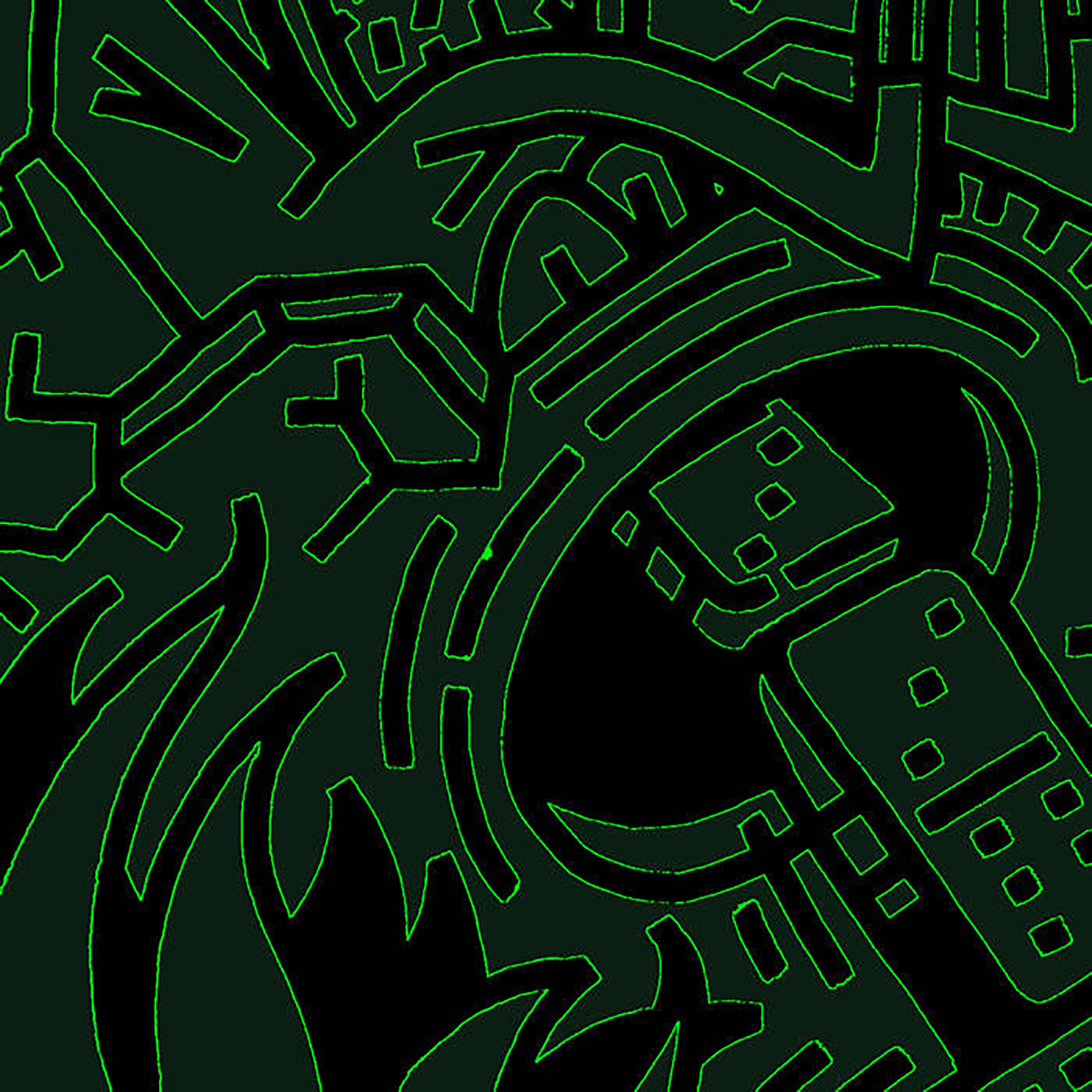 This debut full-length from Ugandan producer Zilla is something of a much-anticipated event, as his Boutiq studio is a crucial part of the killer underground music scene centered around Kampala's Nyege Nyege Tapes. Ekizikiza Mubwengula was additionally anticipated because it is the follow up to an absolute monster of a single that Zilla released in 2019 on Nyege Nyege's club music-themed sub-label Hakuna Kulala. While this latest release is on that same imprint, these songs are considerably wilder and weirder than the more straightforward (and relentlessly, viscerally danceable) "From the Cave." With Ekizikiza Mubwengula, Zilla shoots right past the cutting edge of contemporary dance music and lands somewhere akin to an industrial-damaged dance deconstruction of Rashad Becker's deeply alien Music for Notional Species. Predictably, I am the exact demographic for such a gleefully unhinged tour de force, and this would be the ideal soundtrack for a party occurring exclusively in my head. Yet it is quite a challenge to imagine songs this pointedly hookless and aggressively outré packing the floors of any but the craziest clubs on earth. Granted, there are a handful of more straightforward pieces here too (Zilla's production is as exacting and punchy as ever), but those will not be the ones that people most remember.
This debut full-length from Ugandan producer Zilla is something of a much-anticipated event, as his Boutiq studio is a crucial part of the killer underground music scene centered around Kampala's Nyege Nyege Tapes. Ekizikiza Mubwengula was additionally anticipated because it is the follow up to an absolute monster of a single that Zilla released in 2019 on Nyege Nyege's club music-themed sub-label Hakuna Kulala. While this latest release is on that same imprint, these songs are considerably wilder and weirder than the more straightforward (and relentlessly, viscerally danceable) "From the Cave." With Ekizikiza Mubwengula, Zilla shoots right past the cutting edge of contemporary dance music and lands somewhere akin to an industrial-damaged dance deconstruction of Rashad Becker's deeply alien Music for Notional Species. Predictably, I am the exact demographic for such a gleefully unhinged tour de force, and this would be the ideal soundtrack for a party occurring exclusively in my head. Yet it is quite a challenge to imagine songs this pointedly hookless and aggressively outré packing the floors of any but the craziest clubs on earth. Granted, there are a handful of more straightforward pieces here too (Zilla's production is as exacting and punchy as ever), but those will not be the ones that people most remember.
If Ekizikiza Mubwengula has anything at all that could be considered a follow-up single to "From the Cave," it would be the killer closer "Ekivuuma." It even caused some spontaneous dancing to erupt in my apartment, as it remains infectiously rhythmic despite its many nightmarish and darkly hallucinatory elements. Zilla is something of a virtuoso at crafting heavy industrial-inspired grooves, and "Ekivuuma" is one of his finest creations in that regard, as a skittering, lurching beat and woodpecker-like percussion drag a rumbling bass throb through a lysergic jungle of otherworldly animal howls. It is the best song on the album, but it takes that honor primarily because it feels like the most fully formed. It would admittedly be nice if the other eight pieces felt less like cool percussion vamps, but the consolation prize is that said vamps are invariably inventive, unique, and intensely physical. I am especially fond of "Full Moon," which sounds like a strangled tuba leading a shambling parade of cartoon monsters. Lamentably, it is probably too brief to make my personal highlight reel, but the jackhammering, seismic onslaught of “Entambula” is not. I particularly enjoyed the chopped and stammering vocal hook, as it is one of the rare flashes of human warmth or melody on the album (albeit in brutally mangled form). For the most part, Ekizikiza Mubwengula feels like a broadcast from the dance floor of an alienating, futuristic dystopia where all melody has been replaced with air raid sirens, ominous machine hum, and broken, gnarled, and unrecognizable deconstructions of samples. It is an incredibly striking and instinctive aesthetic for sure, but it is best experienced in bracing, single-song doses, as the relentless industrial bludgeoning starts to yield diminishing returns as an album-length assault.
Samples can be found here.
Read More
- Anthony D'Amico
- Albums and Singles
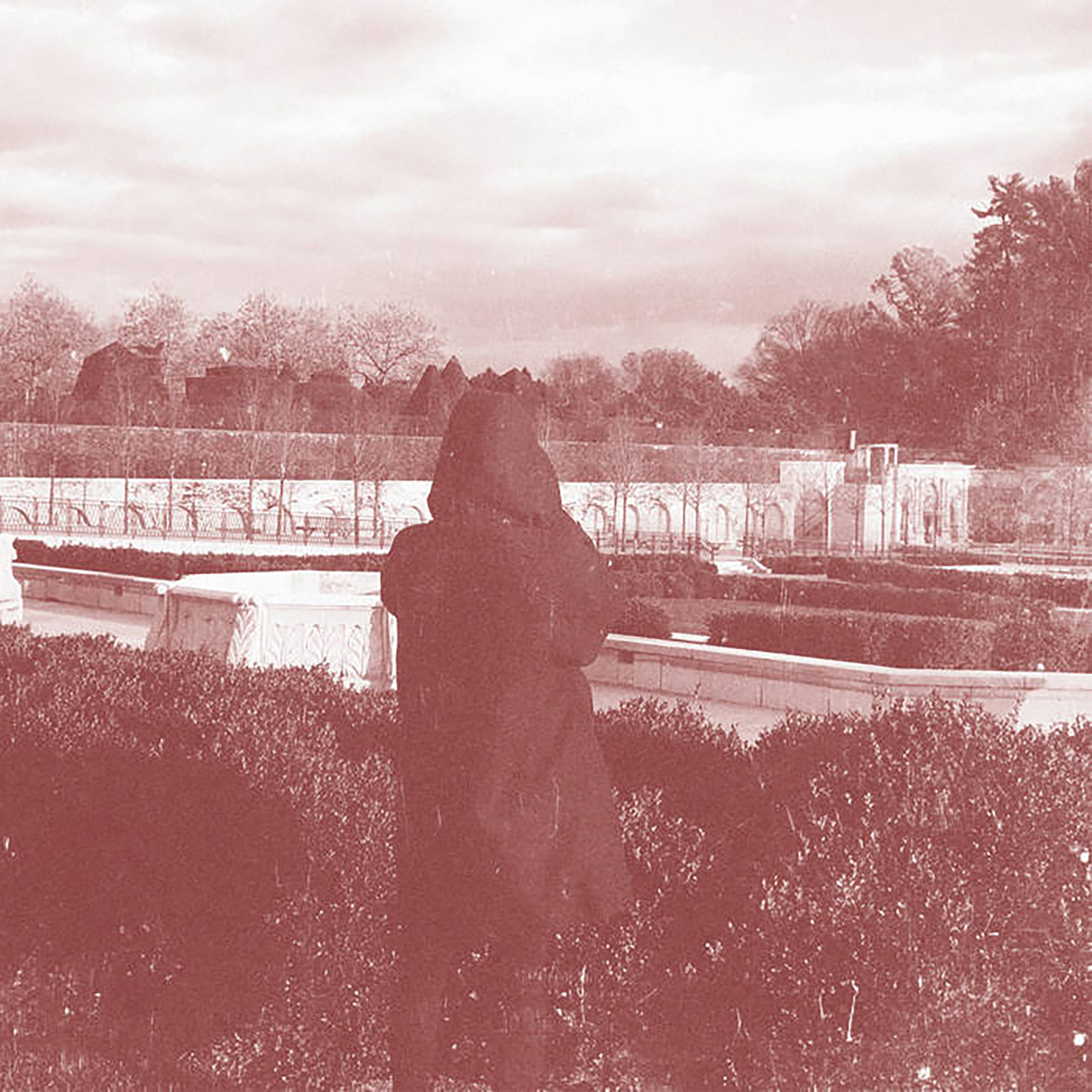 This is Pietrusko's first solo album under his own name, but sound art enthusiasts will likely remember his previous outing as Six Microphones (2019). Elegiya is a radically different release, however, as it comfortably fits within the more ambient/drone side of Room40's aesthetic on its surface. Beneath the surface, however, lies a roiling emotional intensity that sometimes becomes downright volcanic. As befits the album's title, Pietrusko drew his inspiration from elegies, but does so in a very unconventional way, as he was most fascinated by themes of repetition and shifting context. As he himself puts it, "the creation and performance of an elegy, however, is not an experience of this original sorrow but is instead its repetition." The more interesting part, however, is that Pietrusku "attempts to capture the contradictory condition of a macro-level stasis versus a tumultuous interior." In more practical terms, that means that Elegiya transforms five piano motifs into a suite of beautifully melancholy ambient pieces that self-destruct into frayed, blown-out eruptions of emotional catharsis.
This is Pietrusko's first solo album under his own name, but sound art enthusiasts will likely remember his previous outing as Six Microphones (2019). Elegiya is a radically different release, however, as it comfortably fits within the more ambient/drone side of Room40's aesthetic on its surface. Beneath the surface, however, lies a roiling emotional intensity that sometimes becomes downright volcanic. As befits the album's title, Pietrusko drew his inspiration from elegies, but does so in a very unconventional way, as he was most fascinated by themes of repetition and shifting context. As he himself puts it, "the creation and performance of an elegy, however, is not an experience of this original sorrow but is instead its repetition." The more interesting part, however, is that Pietrusku "attempts to capture the contradictory condition of a macro-level stasis versus a tumultuous interior." In more practical terms, that means that Elegiya transforms five piano motifs into a suite of beautifully melancholy ambient pieces that self-destruct into frayed, blown-out eruptions of emotional catharsis.
The album kicks off in supremely crushing fashion with the epic "Pershing Red Skies," which sets an impossibly high bar for everything that follows. The piece deceptively opens with warm swells of billowing chords, but that proves to be a mirage, as everything gradually becomes sharper, louder, and more frayed en route to being ripped open by seismic waves of juddering synth-like tones. At times it favorably calls to mind Oval or Tim Hecker, but it mostly feels like an great ambient piece whose wake of overtones unexpectedly refracted back something roaring, alive, and all-consuming (like a feedback monster attacking heaven). While "Pershing Red Skies" is unquestionably the album's zenith, the other eight pieces offer similarly deft variations of the same nightmarish inversion. For example, "Iru Descent" sounds like a ghostly factory that manufactures clouds of menacing dissonance, while "UTM 39N" feels like thick, viscous drones slowly undulating and oozing across a desolate prairie towards a distant train. The latter is my second favorite piece on the album, but just about everything on Elegiya blossoms into a memorably intense crescendo of some kind. Usually that crescendo resembles something akin to a Tim Hecker album getting sucked into a gnarled, curdled, and squirming extradimensional horror, which is just fine by me. That said, Pietrusko proves impressively inventive in finding cool news ways to ravage beauty, such as transforming heavenly choruses into snarling, infernal roars or materializing a demonically possessed Victrola inside a quietly churning, hissing soundscape. Given how unrecognizably mutilated some passages feel, I have no idea which instruments Pietrusko's palette included beyond piano, but the whole album feels like someone opened a Pandora's Box of corroded classical music fragments and enigmatic field recordings that transform a somber occasion into something far more visceral and unpredictable. Pietrusko has achieved something truly impressive with Elegiya, crafting a poignant, haunted-sounding drone opus that is repeatedly torn apart from within by a clawing, thrashing elemental force.
Samples can be found here.
Read More
- Anthony D'Amico
- Albums and Singles
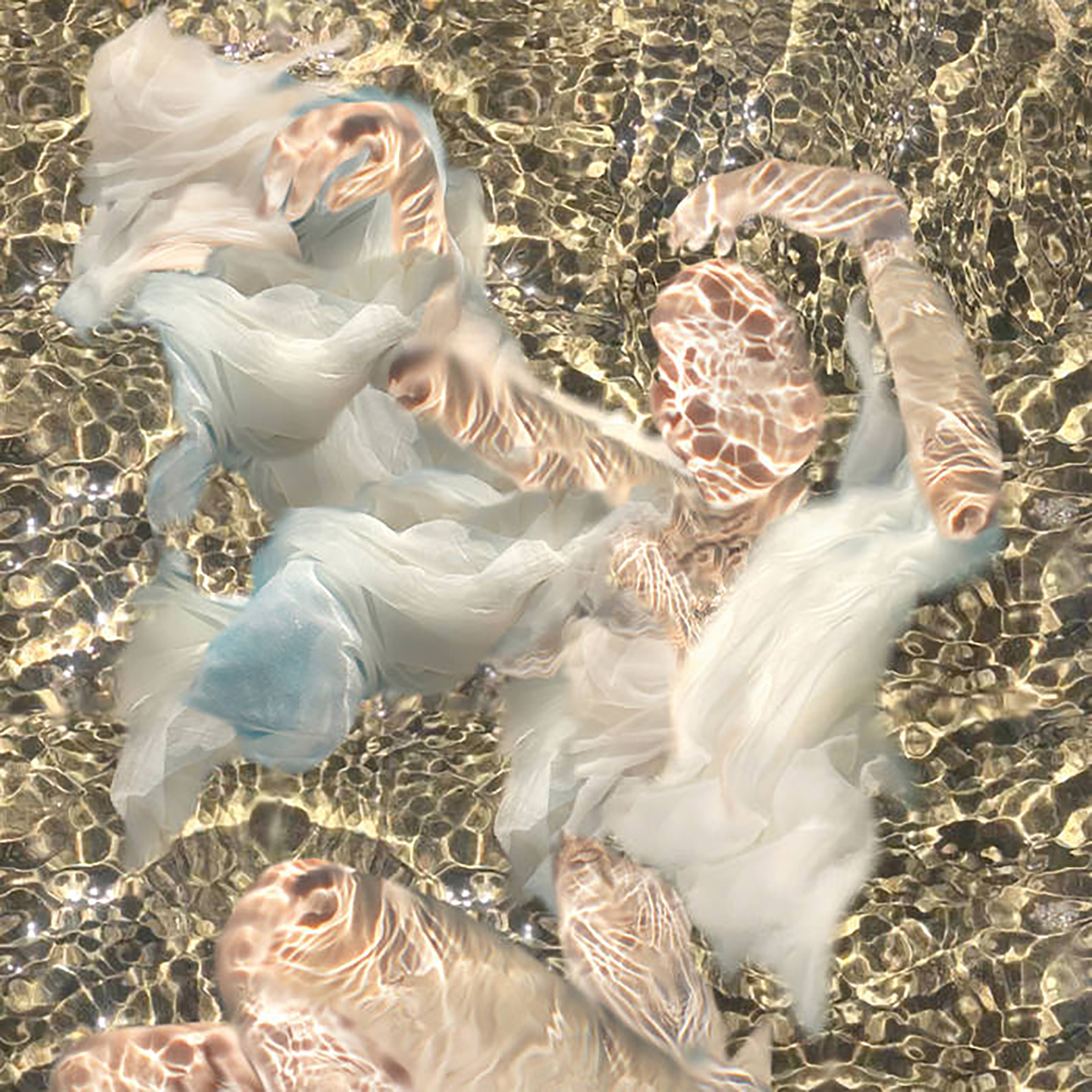 I loved Sage Fisher's last album (the wonderful and hallucinatory Liminal Garden), so I was quite eager to find out how she would follow such a unique vision. Now that Body of Water has been released, I have my answer and it is very much an expectation-subverting one. While the harp arguably remains Fisher's primary instrument, her vocals take a much more prominent role with this latest opus. That is a twist, certainly, but it is not THE twist, which is that Fisher enlisted the aid of acclaimed producer Tucker Martine to craft a suite of songs that feels like a sensual and psychotropic strain of outsider R&B. Whether it is close enough to the real thing to make an impact beyond underground electronic music circles remains to be seen, but Fisher's stylistic reinvention is an extremely cool and surprising one regardless. Admittedly, it took me a few listens to fully warm to the unabashed pop hooks that fill this album, but Fisher's more lysergic impulses are never far away, resulting in an immersive swirl of delightful mindfuckery anchored by memorable hooks, simmering grooves, and a newly unveiled soulfulness.
I loved Sage Fisher's last album (the wonderful and hallucinatory Liminal Garden), so I was quite eager to find out how she would follow such a unique vision. Now that Body of Water has been released, I have my answer and it is very much an expectation-subverting one. While the harp arguably remains Fisher's primary instrument, her vocals take a much more prominent role with this latest opus. That is a twist, certainly, but it is not THE twist, which is that Fisher enlisted the aid of acclaimed producer Tucker Martine to craft a suite of songs that feels like a sensual and psychotropic strain of outsider R&B. Whether it is close enough to the real thing to make an impact beyond underground electronic music circles remains to be seen, but Fisher's stylistic reinvention is an extremely cool and surprising one regardless. Admittedly, it took me a few listens to fully warm to the unabashed pop hooks that fill this album, but Fisher's more lysergic impulses are never far away, resulting in an immersive swirl of delightful mindfuckery anchored by memorable hooks, simmering grooves, and a newly unveiled soulfulness.
After a brief yet surreal introduction of cooing looped vocals and skipping Oval-esque electronics, the autotuned R&B of the title piece reveals the unexpected new direction. When I listened to the album initially, I kept waiting for "Body of Water" to cleverly derail into more hallucinatory and abstract territory, but that moment never came. The vocals are processed into semi-artificiality and there is an eerily ghostly atmosphere, but the piece is otherwise straight-up melodic pop, as Fisher's inner dance diva belts out a sultry melody over a stark backdrop of deep bass, slow kick drum, and a quietly simmering haze of electronics. Rather than a fluke, that piece is a statement of intent that sets the tone for all that follows. That pop-inspired side reaches its apotheosis with "Clearing," which could easily be mistaken for a killer Portishead remix. At the opposite end of the spectrum are a couple of stellar harp pieces: the rippling and gently heaving psychedelia of "Fountain" and the swooningly melodic "Idyll." The remainder of the songs evoke the artfully glitchy and pixelated pop of an imagined cyberpunk future, but Fisher keeps things stark, weird, and intimate enough to make that seem like an appealing trajectory. "Capricorn" is a particular highlight, resembling some kind of spaced-out synth-driven future funk that is wonderfully unstable and out of phase. Elsewhere, I loved "Break," which gradually transforms into a delirious swirl of pitch-shifted voices suggesting a chopped and screwed Enya classic, as well as the frayed and shuddering vocal loops of the two-part "Hummingbird." In fact, I like just about everything on this album, as even the most straightforwardly melodic pieces are inventive and art-damaged enough to stand out as compelling, fresh, and unique.
Samples can be found here.
Read More